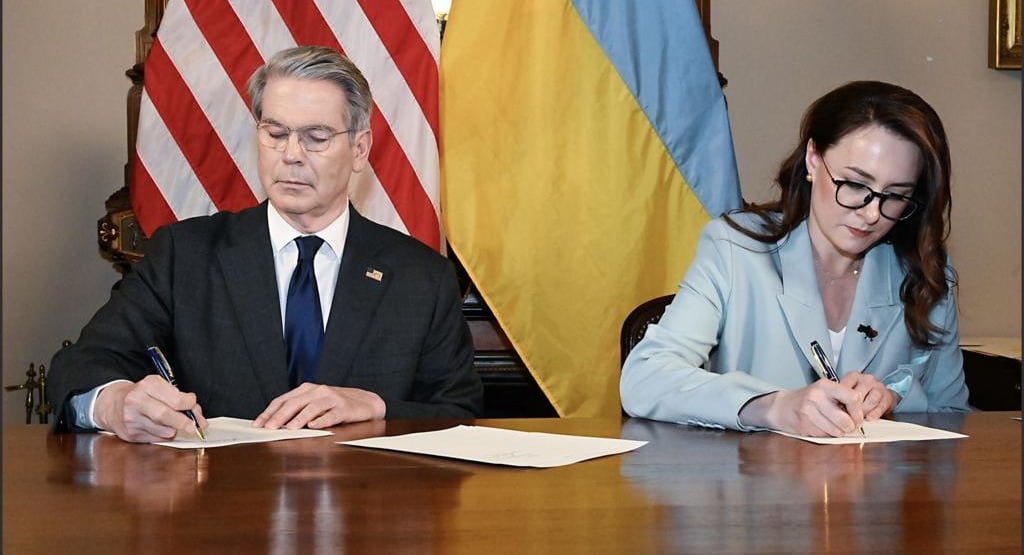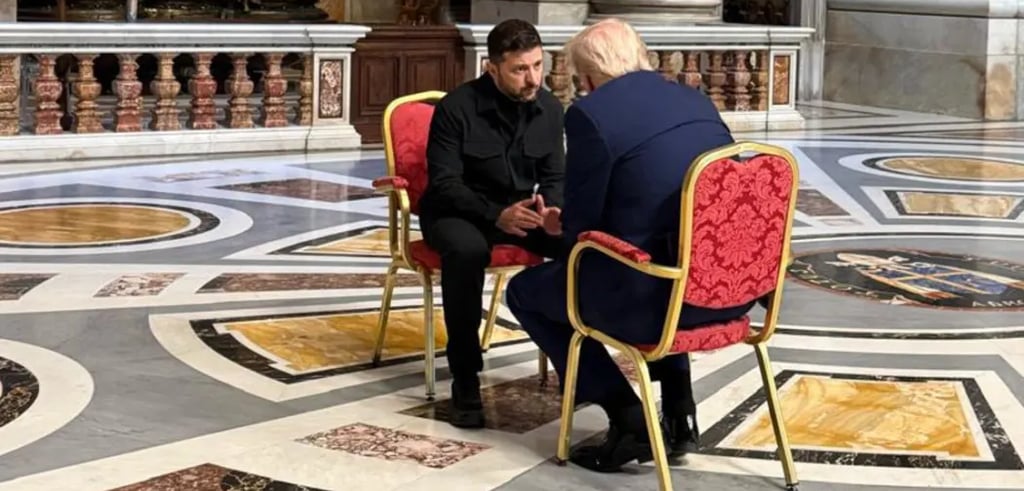U.S. and Ukraine Sign Landmark Minerals Deal Amid Shift in Washington's Strategy
After months of tension and negotiation, the U.S. and Ukraine have signed a landmark minerals agreement, redefining America's role in post-war Ukraine while pulling back from previous military commitments.
WORLDPOLITICS
AFP
5/1/20253 min read


On Wednesday, the United States and Ukraine finalized a long-delayed minerals agreement that repositions U.S. involvement in Ukraine’s future—from military backing to long-term economic partnership. The accord comes after President Donald Trump’s administration halted military aid and instead pivoted toward securing resource-based influence in the region.
Ukraine, under mounting pressure and in the midst of a grinding war with Russia, agreed to the deal after protracted negotiations that lasted over two months. The result: Ukraine retains full sovereignty over its rare earths, widely seen as a vital resource for emerging technologies such as electric vehicles, semiconductors, and defense applications.
“Ukraine retains full control over its subsoil, infrastructure, and natural resources,” said Prime Minister Denys Shmygal in a televised statement from Kyiv. He emphasized that the deal was “good, equal, and beneficial.”
The newly established Reconstruction Investment Fund, jointly controlled by the U.S. and Ukraine, will reinvest profits solely within Ukraine, with each side maintaining equal 50% voting rights. This was seen as a critical win for Kyiv, especially after early U.S. demands under Trump’s administration sought up to $500 billion worth of Ukraine’s mineral assets—quadruple the estimated U.S. wartime support since 2022.
A Shift in U.S. Foreign Policy
This deal reflects a strategic redefinition of U.S. commitments abroad, particularly under Trump, who has sought to limit traditional military alliances and defense guarantees. Notably, Trump has refused to back Ukraine’s NATO ambitions and scaled back promises of U.S. security guarantees.
Yet, he framed the American economic presence in Ukraine as a stabilizing force:
“The American presence will keep a lot of bad actors out... or at least out of the area where we’re doing the digging,” Trump said during a cabinet meeting.
No Repayment for Military Aid
Shmygal clarified that Ukraine will not repay any debt for the billions in military and humanitarian support received under the Biden administration. This clears a key hurdle in the negotiations and allays fears that Ukraine might be forced into economic servitude as a result of wartime dependency.
“The fund's profits will be reinvested exclusively in Ukraine,” he emphasized on Telegram.
U.S. Patience Wearing Thin on Peace Talks
Despite the minerals deal, the Trump administration remains impatient with the lack of progress in peace negotiations. Secretary of State Marco Rubio warned on Tuesday that unless both sides bring forward “concrete proposals,” the U.S. may withdraw from mediating the conflict altogether.
Trump, who once promised to end the war on “Day One,” has pushed for a controversial settlement proposal in which Ukraine cedes parts of its territory to Russia—a non-starter for Kyiv.
Photo: US TREASURY DEPARTMENT


Photo: Ukrainian Presidency
Strategic Resources at Stake
Ukraine possesses some of the largest lithium reserves in Europe and is a key producer of manganese and titanium, making it a high-value partner in the global race for critical minerals. The deal offers a pathway for U.S. companies to invest in and extract these resources, while still respecting Ukrainian sovereignty.
Meanwhile, Russia maintains control of about 20% of Ukraine’s territory, and fighting continues. A Ukrainian incursion into Russia’s Kursk region last August led to further hostilities, with Moscow claiming 288 civilian deaths during the incursion.
Conclusion: Realignment, Not Withdrawal
The minerals agreement signals a realignment of U.S.-Ukraine relations—less focused on defense, more centered on economic cooperation and resource development. While the Trump administration distances itself from NATO-style commitments, it continues to seek influence and strategic value in Ukraine through new forms of investment diplomacy.
Would you like a visual breakdown of Ukraine’s critical mineral assets or U.S. foreign policy shifts under Trump?
© 2025. Ke Press Global. A Ke Harbor Company. All rights reserved.
FOLLOW KE PRESS GLOBAL ON :
Contact us


